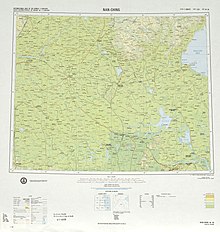Ch'ü-fu
Appearance
See also: chúfú
English
[edit]
Etymology
[edit]From Mandarin 曲阜 (Qūfù), Wade–Giles romanization: Chʻü¹-fu⁴.[1]
Proper noun
[edit]Ch'ü-fu
- Alternative form of Qufu
- 1919, John C. Ferguson, Outlines of Chinese Art[1], Chicago: University of Chicago Press, →OCLC, page 116:
- There is a portrait of Confucius at Chʻü-fu attributed to Wu and another striking picture representing the struggle of a tortoise with a serpent, kuei she tʻu, which is in the Prefect's official residence at Chʻêng-tu, Sze-chʻuan.
- 1962, J. S. Cummins, The Travels and Controversies of Friar Domingo Navarrete, 1618-1686[2], volume II, Cambridge University Press, →OCLC, page 209:
- He is bury'd in a stately Sepulcher in the same Town where he was born.¹
[...]
¹ The temple-tomb at Chʻü-fu in Shantung ; it is about a mile from the modern city ; this 'stately Sepulcher' was at that time in a delapidated state of repair.
- 2011, Ralph D. Sawyer, Ancient Chinese Warfare[5], Basic Books, →ISBN, →OCLC, page 143:
- Next in the traditionally accepted sequence of Shang capitals is Yen, tentatively identified with a site out in Shandong amid the Tung Yi, near what would eventually become Ch'ü-fu in the state of Lu.
- For more quotations using this term, see Citations:Ch'ü-fu.
Translations
[edit]Qufu — see Qufu
References
[edit]- ^ Qufu Wade-Giles romanization Ch’ü-fu, in Encyclopædia Britannica
Categories:
- English terms borrowed from Mandarin
- English terms derived from Mandarin
- English terms borrowed from Wade–Giles
- English terms derived from Wade–Giles
- English lemmas
- English proper nouns
- English uncountable nouns
- English multiword terms
- English terms spelled with Ü
- English terms spelled with ◌̈
- English terms with quotations
